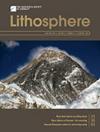基于时空注意机制的门控循环单元横波速度预测方法
IF 1.7
4区 地球科学
Q3 GEOCHEMISTRY & GEOPHYSICS
引用次数: 0
摘要
横波速度在油气工业的地震勘探和储层评价中起着重要的作用。由于缺乏实际生产活动的横波速度数据,有必要根据纵波速度等储层参数进行横波速度预测。针对横波速度与储层参数在时空域具有显著相关性的特点,提出了一种基于时空注意机制和门控循环单元(STAGRU)的融合网络。以准噶尔盆地致密砂岩储层为例,采用交会图技术选取了对横波速度敏感的4个测井参数:纵波速度、密度、自然伽马和中子孔隙度。利用自相关技术分析了测井曲线的深度相关性。研究了这些测井数据的时空特征与网络注意权值之间的关系,以验证纳入时空注意机制的基本原理。最后,利用多口井的实测数据,分别对训练集和测试集的性能进行分析。结果表明,该方法的预测精度和泛化能力均优于单参数拟合方法、多参数拟合方法、Xu-White模型方法、GRU网络和2DCNN-GRU混合网络。这证明了基于时空注意机制的横波速度预测方法在致密砂岩储层岩石物理建模研究中的可行性。本文章由计算机程序翻译,如有差异,请以英文原文为准。
Method for Predicting Transverse Wave Velocity Using a Gated Recurrent Unit Based on Spatiotemporal Attention Mechanism
Abstract Transverse wave velocity plays an important role in seismic exploration and reservoir assessment in the oil and gas industry. Due to the lack of transverse wave velocity data from actual production activities, it is necessary to predict transverse wave velocity based on longitudinal wave velocity and other reservoir parameters. This paper proposes a fusion network based on spatiotemporal attention mechanism and gated recurrent unit (STAGRU) due to the significant correlation between the transverse wave velocity and reservoir parameters in the spatiotemporal domain. In the case of tight sandstone reservoirs in the Junggar Basin, the intersection plot technique is used to select four well logging parameters that are sensitive to transverse wave velocity: longitudinal wave velocity, density, natural gamma, and neutron porosity. The autocorrelation technique is employed to analyze the depth-related correlation of well logging curves. The relationship between the spatiotemporal characteristics of these well logging data and the network attention weights is also examined to validate the rationale behind incorporating the spatiotemporal attention mechanism. Finally, the actual measurement data from multiple wells are utilized to analyze the performance of the training set and test set separately. The results indicate that the predictive accuracy and generalization ability of the proposed STAGRU method are superior to the single-parameter fitting method, multiparameter fitting method, Xu-White model method, GRU network, and 2DCNN-GRU hybrid network. This demonstrates the feasibility of the transverse wave velocity prediction method based on the spatiotemporal attention mechanism in the study of rock physics modeling for tight sandstone reservoirs.
求助全文
通过发布文献求助,成功后即可免费获取论文全文。
去求助
来源期刊

Lithosphere
GEOCHEMISTRY & GEOPHYSICS-GEOLOGY
CiteScore
3.80
自引率
16.70%
发文量
284
审稿时长
>12 weeks
期刊介绍:
The open access journal will have an expanded scope covering research in all areas of earth, planetary, and environmental sciences, providing a unique publishing choice for authors in the geoscience community.
 求助内容:
求助内容: 应助结果提醒方式:
应助结果提醒方式:


